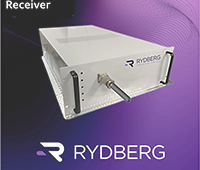Physicists at NIST have built a quantum simulator that can
engineer interactions among hundreds of quantum bits (qubits)—10 times more
than previous devices. As described in Nature, the simulator has passed a series of important
benchmarking tests and scientists are poised to study problems in material
science that are impossible to model on conventional computers.
Many important problems in physics—especially
low-temperature physics—remain poorly understood because the underlying quantum
mechanics is vastly complex. Conventional computers—even supercomputers—are
inadequate for simulating quantum systems with as few as 30 particles. Better
computational tools are needed to understand and rationally design materials,
such as high-temperature superconductors, whose properties are believed to
depend on the collective quantum behavior of hundreds of particles.
The NIST simulator consists of a tiny, single-plane crystal
of hundreds of beryllium ions, less than 1 mm in diameter, hovering inside a
device called a Penning trap. The outermost electron of each ion acts as a tiny
quantum magnet and is used as a qubit—the quantum equivalent of a “1” or a “0”
in a conventional computer. In the benchmarking experiment, physicists used
laser beams to cool the ions to near absolute zero. Carefully timed microwave
and laser pulses then caused the qubits to interact, mimicking the quantum
behavior of materials otherwise very difficult to study in the laboratory.
Although the two systems may outwardly appear dissimilar, their behavior is
engineered to be mathematically identical. In this way, simulators allow
researchers to vary parameters that couldn’t be changed in natural solids, such
as atomic lattice spacing and geometry. In the NIST benchmarking experiments,
the strength of the interactions was intentionally weak so that the simulation
remained simple enough to be confirmed by a classical computer. Ongoing
research uses much stronger interactions.
The NIST quantum simulator permits study of quantum systems that are difficult to study in the laboratory and impossible to model with a supercomputer. In this photograph of the crystal, the ions are fluorescing, indicating the qubits are all in the same state. Under the right experimental conditions, the ion crystal spontaneously forms this nearly perfect triangular lattice structure. Image: Britton/NIST |
Simulators exploit a property of quantum mechanics called
superposition, wherein a quantum particle is made to be in two distinct states
at the same time, for example, aligned and anti-aligned with an external
magnetic field. So the number of states simultaneously available to 3 qubits,
for example, is 8 and this number grows exponential with the number of qubits:
2N states for N qubits.
Crucially, the NIST simulator also can engineer a second
quantum property called entanglement between the qubits, so that even
physically well separated particles may be made tightly interconnected.
Recent years have seen tremendous interest in quantum
simulation; scientists worldwide are striving to build small-scale
demonstrations. However, these experiments have yet to fully involve more than
30 quantum particles, the threshold at which calculations become impossible on
conventional computers. In contrast, the NIST simulator has extensive control
over hundreds of qubits. This order of magnitude increase in qubit-number
increases the simulator’s quantum state space exponentially. Just writing down
on paper a state of a 350-qubit quantum simulator is impossible—it would
require more than a googol of digits: 10 to the power of 100.
Over the past decade, the same NIST research group has
conducted record-setting experiments in quantum computing, atomic clocks and,
now, quantum simulation. In contrast with quantum computers, which are
universal devices that someday may solve a wide variety of computational
problems, simulators are “special purpose” devices designed to provide insight
about specific problems.






